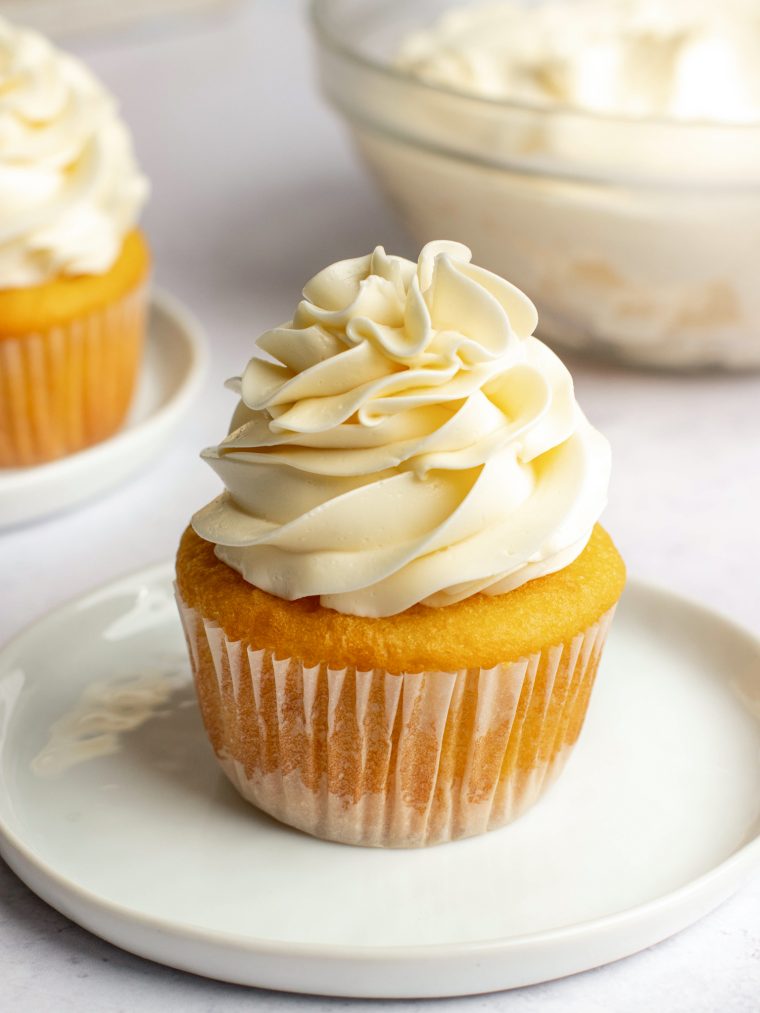
Swiss Meringue Buttercream
Learn to make Swiss meringue buttercream, the go-to frosting for making beautiful, pastry chef-worthy cakes and desserts.
Ingredients
- 6 large egg whites
- 1¾ cups granulated sugar
- 3 sticks (1½ cups) unsalted butter, at room temperature, cut into 1-tablespoon slices
- ⅛ teaspoon salt
- 1 tablespoon pure vanilla extract
Instructions
- Create a double boiler by placing your mixing bowl over a pot of water filled with 1 to 2 inches of water. Bring the water to a simmer. Make sure that the water does not touch the bottom of the bowl or the eggs could overcook.
- To the mixing bowl, add the egg whites and sugar and whisk to combine.
- Place the bowl over the simmering pot of water, and stir the egg white-sugar mixture frequently for 3 to 4 minutes, or until the sugar is completely dissolved (when you pinch the mixture between your fingers, you shouldn't feel any granules of sugar). You don't need to check the temperature, but it should be between 140°F-150°F at this point.
- Once the sugar is dissolved in the egg whites, remove the bowl from sitting over the pot and place onto a towel on the counter. Let cool for 10 minutes at room temperature.
- Set the slightly cooled bowl of egg-sugar mixture into your electric stand mixer, fitted with a whisk attachment, and beat on high speed for 5 to 7 minutes, or until the bottom of the bowl feels room temperature and the mixture holds soft to medium peaks.
- With the mixer on medium-low speed, slowly add the softened butter cubes, a few at a time, mixing until incorporated between each addition.
- Add the vanilla extract and salt, and whip on high speed for 6 to 8 minutes, until smooth, thickened, and stiff peaks form. The buttercream may look curdled at first, but it will come together into a smooth icing as you whip it. (If it still looks clumpy or soupy after 8 minutes, see the troubleshooting tips below.)
- To remove any excess air bubbles, remove your bowl from the stand mixer and fold with a rubber spatula for 1 to 2 minutes.
- Note: Be sure your mixing bowl is squeaky clean; any residual grease in the bowl will deflate the meringue. Similarly, be sure there are no traces of egg yolk in the egg whites, as the fat will prevent the eggs from whipping properly.
- Troubleshooting: If your buttercream looks curdled or clumpy after whipping, it likely means that your butter was too cold. You can fix this by placing the mixture back over the pot of simmering water and heating for 1 to 2 minutes, stirring constantly, to soften the butter. Following that, beat the mixture again on high speed for several minutes, or until smooth and creamy. Conversely, if the mixture looks soupy after whipping, chances are, your butter was a bit too soft. Place the bowl of the mixer with the buttercream into the freezer for 5 minutes, then remove and continue to whip for several minutes, or until thickened and creamy.
- If you make the buttercream in advance or have some left over, when you’re ready to use it, let it sit out at room temperature for an hour, and then transfer it into the bowl of your electric mixer and whip it for several minutes, or until smooth and creamy. If the buttercream starts to looked curdled or soupy, see the troubleshooting tips above.